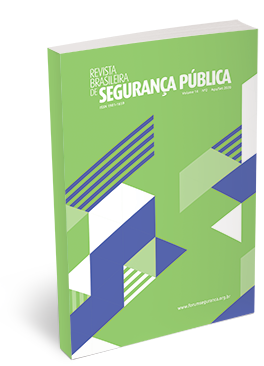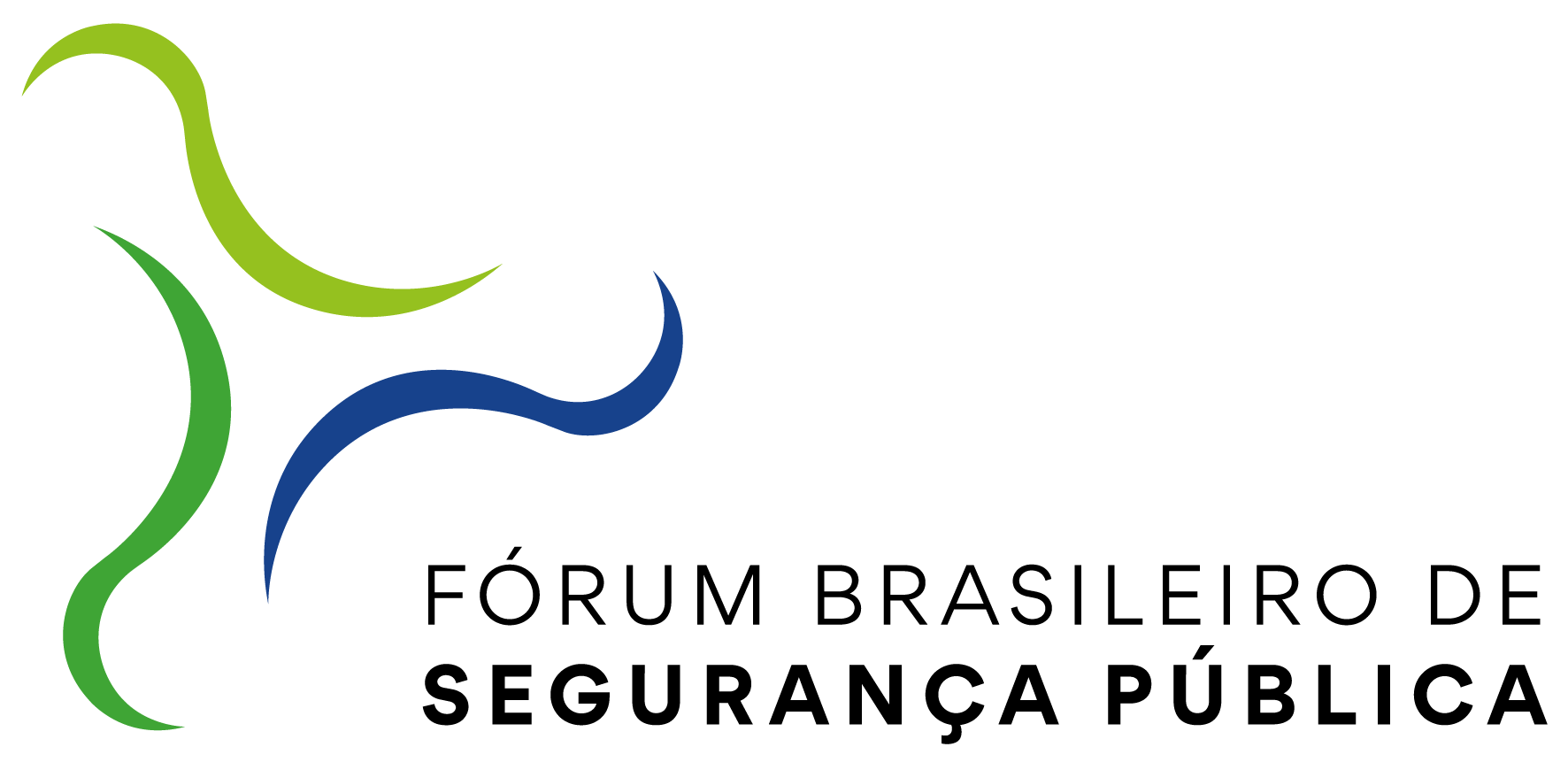Drug economy and security policies in Triângulo Mineiro:
crime control between wholesale and retail markets
DOI:
https://doi.org/10.31060/rbsp.2020.v14.n2.1044Keywords:
Drug market models; Public security policies; Drug use and trafficking.Abstract
This article aims to elucidate four economic models present in the illicit drug market and its intersections and connections with Minas Gerais’ public security policies for the Triângulo Mineiro region. In 2003, the public security field in Minas Gerais went through a redefinition in the course of university researchers administration due to the creation of the Social Defense Secretariat (Secretaria de Defesa Social — SEDS). The crime control management has incorporated a violent criminality prevention segment, which had resulted in positive outcome in other Brazilian federative units and other countries. The Fica Vivo! program has become a model to be followed in pursuance of homicide rates reduction. It has been observed that localities in Belo Horizonte that hosted the program have perceived social effectiveness by reducing these types of occurrences by 47%. Thus, it is interpreted how the policies implemented by SEDS influenced the crime control management in upcountry cities far from the capital of Minas Gerais. How do managers and other agents of these programs, as well as local population segments perceive the constitution of the drug markets in the Triângulo Mineiro region? In this context, the first model of drug trafficking described was the political-business model. The research was based on the conclusive report from the Minas Gerais’ Narcotrafficking Parliamentary Inquiry Commission, which documented accusations against politicians, businessmen and public security officers. The second model was the caipira route, which revealed drug markets installed on farms via air transport, discovered by Federal Police operations and reported by the local press. The third was the peripheral model, which was located in poor neighborhoods and consisted of a market generally made up of young people networks that determine moral norms in the territory. The last model identified was the cultured model, which involves the middle and upper class artistic and intellectual academic population of the cities. The selected method was an ethnographic research developed between 2011 and 2015, and the material analyzed was extracted from interviews, the Parliamentary Inquiry Commission’s report on illegal drug trade and files from the local press. It is possible to conclude that the first two models of drug trafficking are associated with a wholesale economy regimented by middle and upper class liberal professionals; the third model mixes the wholesale and retail economy in peripheral neighborhoods with changes derived from the consolidation of the First Command of the Capital (Primeiro Comando da Capital — PCC); and the last model describes multiple retail markets within and around the Federal University of Uberlândia (Universidade Federal de Uberlândia — UFU), carried out by middle class students. In addition, we will see how the intersections between these markets have also become customary, creating zones of circularity. Lastly, it is noted that the state crime control managers and local police officers relate the perception of drug consumption and trafficking by local population segments only to the peripheral model’s operation. Furthermore, the mentioned social agents usually propagate the notion that drug consumption, drug trafficking and violent crimes are limited to the population living in territories called risk areas and criminality rings.
Downloads
References
ALVITO, M. as cores de acari: uma favela carioca. Rio de Janeiro: FGV, 2001.
ASSEMBLEIA LEGISLATIVA DE MINAS GERAIS. Relatório Estadual da CPI do Narcotráfico/MG (CPI/MG). Belo Horizonte: ALMG, 2000.
BIONDI. K. junto e misturado: uma etnografia do PCC. São Paulo: Terceiro Nome, 2010.
BEATO, C.; PEIXOTO, B. Há Nada Certo. Políticas Sociais e Crime em Espaços Urbanos. In: SENTO-SÉ, J. T. prevenção da violência: o papel das cidades. Rio de Janeiro: Civilização Brasileira, 2005.
BEATO, C.; SILVA, B.; SILVEIRA, A. Prevenção de Crimes Urbanos: o Programa Fica Vivo. In: LIMA, R. S.; PAULA, L. segurança pública e violência: o Estado está cumprindo seu papel? São Paulo: Contexto, 2008.
CALDEIRA, T. cidade de muros: crime, segregação e cidadania em São Paulo. São Paulo: 34, 2000.
CORREIOR DE UBERLÂNDIA,Uberlândia, (2013).
CORREIO DE UBERLÂNDIA. Uberlândia (2015).
CORREIO DE UBERLÂNDIA. (2015b).
EM.COM.BR. Uberaba, (2015).
ESTADO DE MINAS. MPF denuncia 27 por tráfico internacional de drogas; três são mineiros de Uberlândia. Em, Belo Horizonte, 12 dez. 2014.
FELTRAN, G. Fronteiras da tensão: política e violência nas periferias de São Paulo. São Paulo: Unesp, 2011.
LEITE, F. L.Prevenção Social à Criminalidade: a experiência de Minas Gerais. Belo Horizonte: Governo do Estado de Minas Gerais, 2007.
MAUSS, Marcel. sociologia e antropologia.São Paulo: Cosac Naify, 2003.
MISSE, Michel. acusados e acusadores: estudos sobre ofensas, acusações e incriminações. Rio de Janeiro: Reavan, 2008.
MISSE, Michel; LIMA. Roberto Kant. crime e violência no Brasil contemporâneo: estudos de sociologia do crime e da violência urbana. Rio de Janeiro: Lumen Juris, 2011.
NEVES, F. Manual prático da morte: a dimensão da letalidade juvenil. In: OLIVEIRA, K. B.; OLIVEIRA, G. G. olhares sobre a prevenção à criminalidade. Belo Horizonte: Instituto Elo, 2009. p. 175-192.
OLIVEIRA, Kriss Bretas; OLIVEIRA, Gleiber Gomes. olhares sobre a prevenção à criminalidade. Belo Horizonte: Instituto Elo, 2009.
PERALVA, Angelina; GALLO, Fernanda; SINHORETTO, Jacqueline. Economia da droga, instituições e política no Brasil: a CPI do Narcotráfico. In: AZAIS, Christian; KESSLER, Gabriel; TELLES, Vera Silva (Org.). ilegalismos, cidade e política.Belo Horizonte: Fino Traço, 2012. p.199-228.
ROCHA, R. L. S. Sobre a gramática moral do crime: a mobilização de justificativas e acusações acerca dos homicídios na zona leste de Belo Horizonte. In: ENCONTRO ANUAL DA ANPOCS, 42, 2018, Caxambu. anais eletrônicos. Caxambu: Anpocs, 2018.
SAPORI, L. F. segurança pública no Brasil: desafios e perspectivas. Rio de Janeiro: FGV, 2007.
VILELA, C. Suspeitos de tráfico são presos por agredir e manter usuário refém na UFU. uipi!, Uberlândia, 20 maio 2014.
ZALUAR, A. drogas e cidadania. São Paulo: Brasiliense, 2008.
Downloads
Published
How to Cite
Issue
Section
License
Copyright (c) 2020 Revista Brasileira de Segurança Pública

This work is licensed under a Creative Commons Attribution 4.0 International License.
Licensing
The Brazilian Journal of Public Security uses the Creative Commons License as a form of licensing for its published works. The license used follows the CC BY 4.0 - Attribution 4.0 International model.
To see the permitted rights please go to the full licence or to our Copyright and Licensing page.



